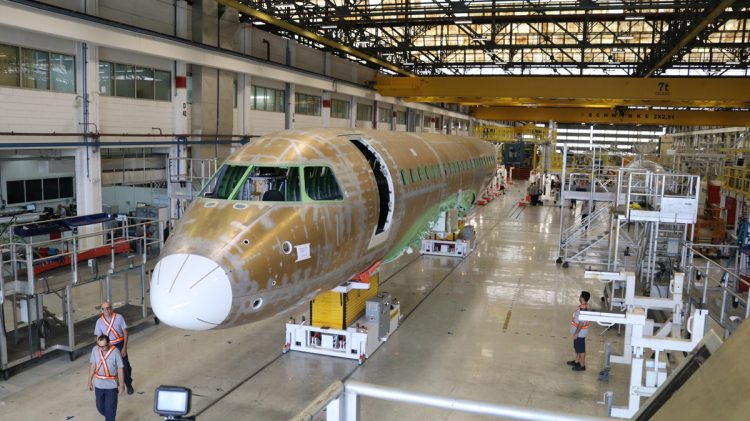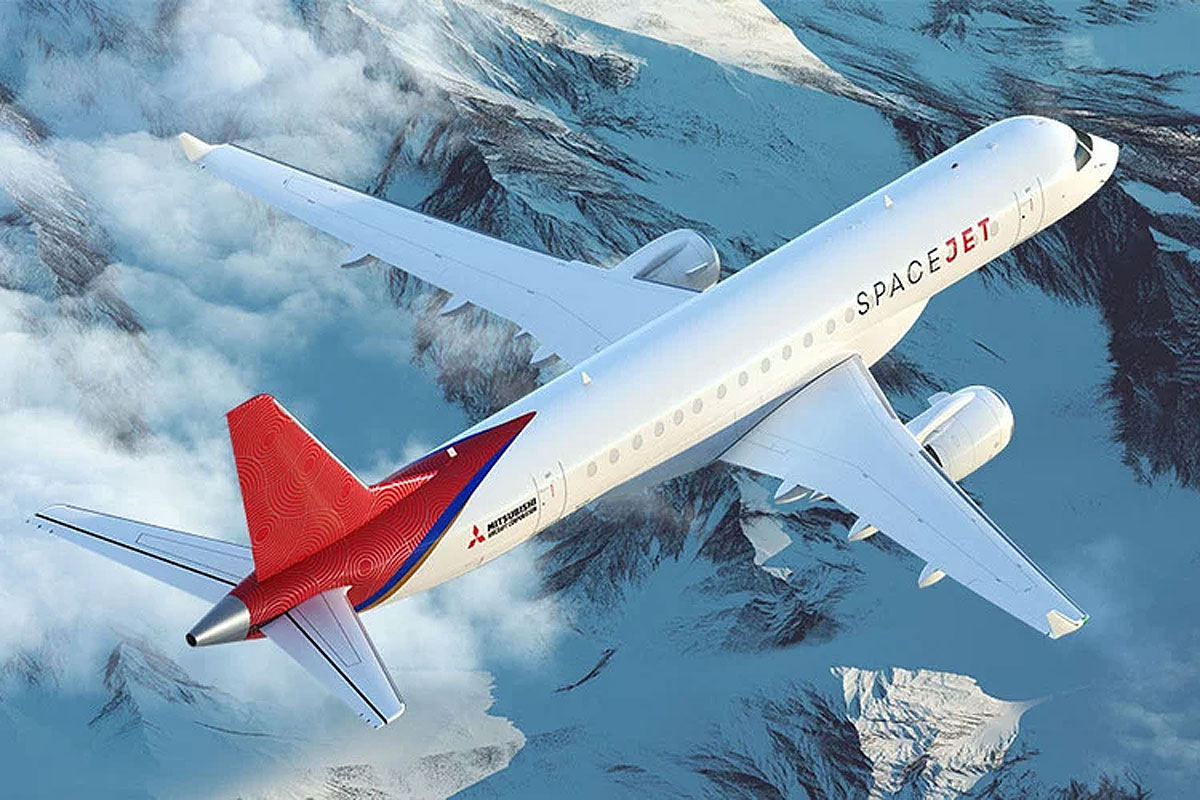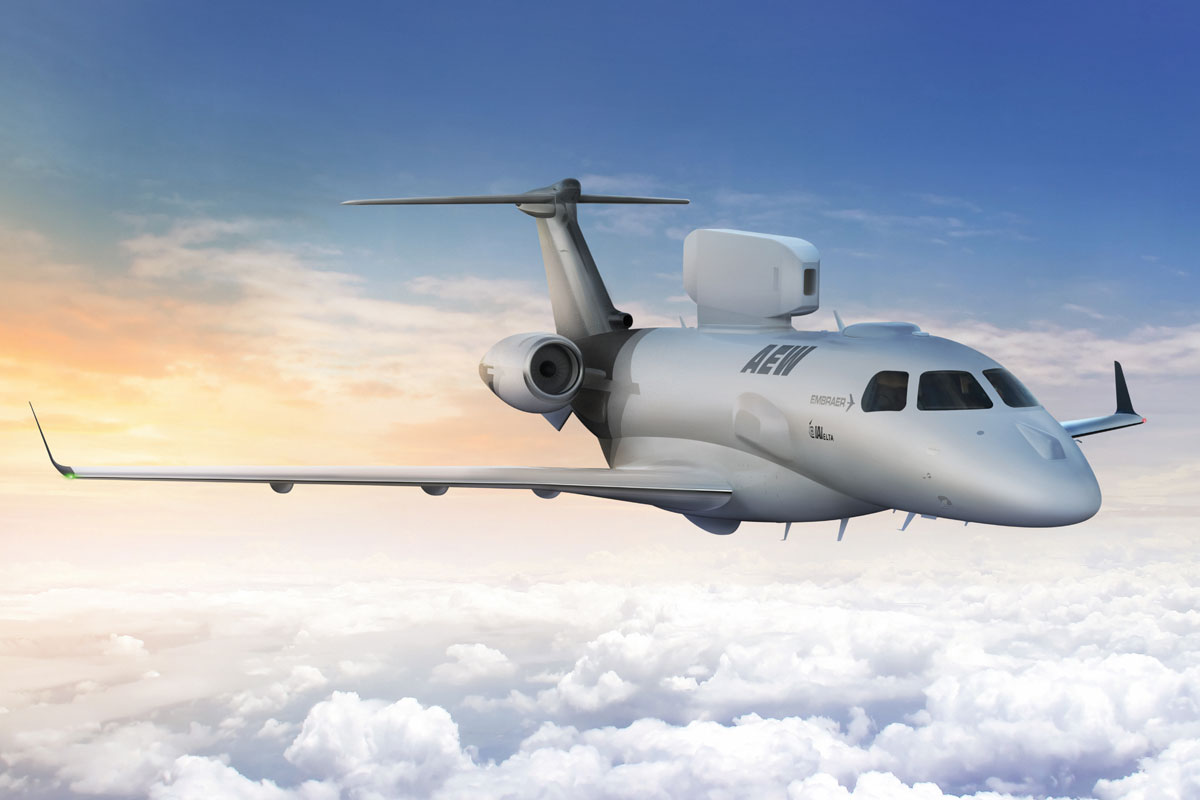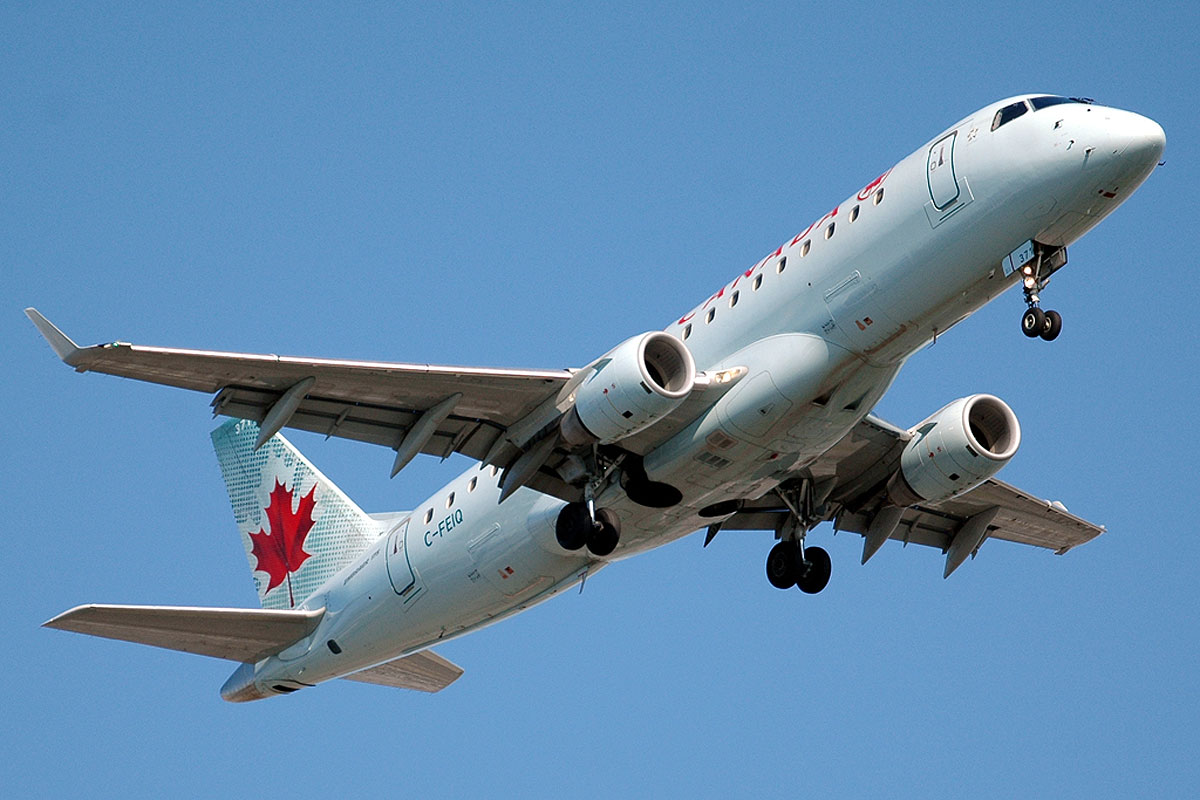After announcing the rebrand of its MRJ regional jet program to SpaceJet days earlier, Mitsubishi Aircraft disappointed visitors to the Paris Air Show by revealing only a Memorandum of Understanding for the sale of 15 M100 to an undisclosed US airline.
Not even the expectation of an announcement of the purchase of the Bombardier CRJ jet program occurred. The two companies keep talking, but an agreement should take longer.
Already the development of the regional jet is quite late. It was expected to start operating in 2013, but should only occur in 2020 with the M90 variant, formerly called MRJ90.
The old model MRJ70, of smaller capacity, was renamed as M100 and had a mock-up of its passenger cabin presented in Le Bourget. But the manufacturer has barely revealed about its redesign which, it says, will make the plane fit the Scope Clause of US airlines.
To achieve this, Mitsubishi would have decided to lengthen the MRJ70’s fuselage to carry 76 passengers – clause limit – in a three-class cabin configuration. Outside the US, the M100 will be able to carry 88 passengers.
To keep the maximum take-off weight limit at 86,000 lbs and still offer a good range – estimated at 1,500 nm – the manufacturer says it will increase the use of composite materials in its construction – specifications for the new aircraft have yet to be revealed.
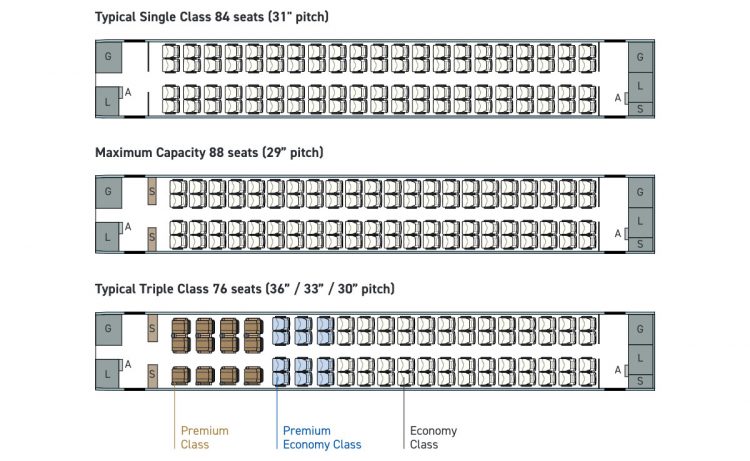
Released only in 2023
Despite the letter of intent of the undisclosed US airline, Mitsubishi remains under threat to launch a family of jets that may fail in the medium term.
Although it has some important orders, the Japanese jet depends on the US regional market to succeed. As the M90 does not fit the limitations of the airline pilot syndicate, it will take another four years to have the new M100.
In that time frame, Embraer, the leading jet supplier in this class, will have the strength of its Boeing partner to maintain dominance in this market, even if the E175-E2, the direct rival of the M100, fails to meet current Scope Clause.
